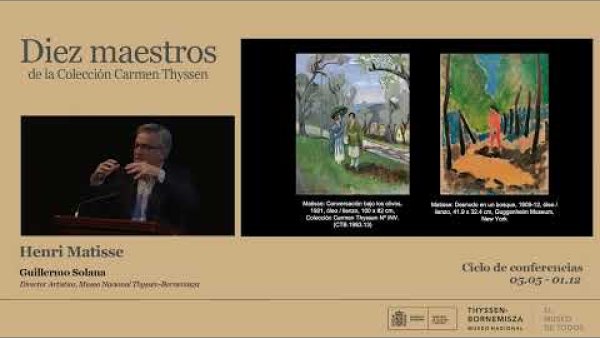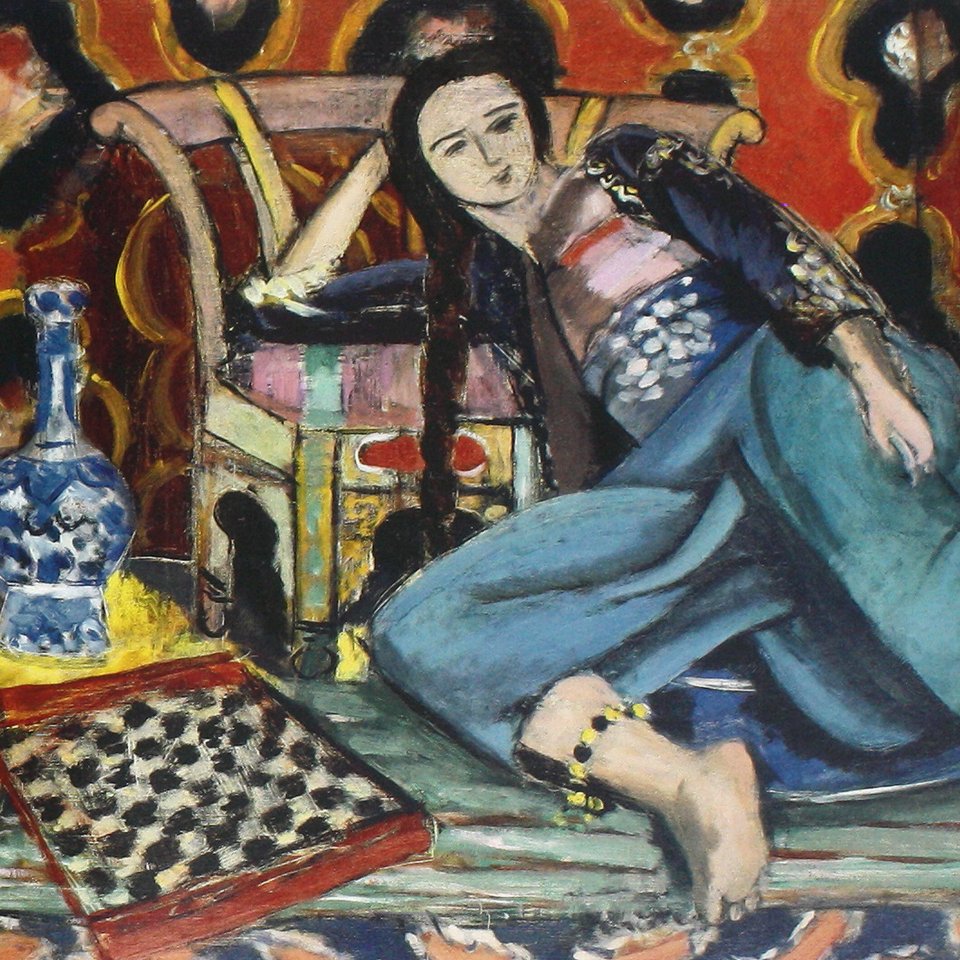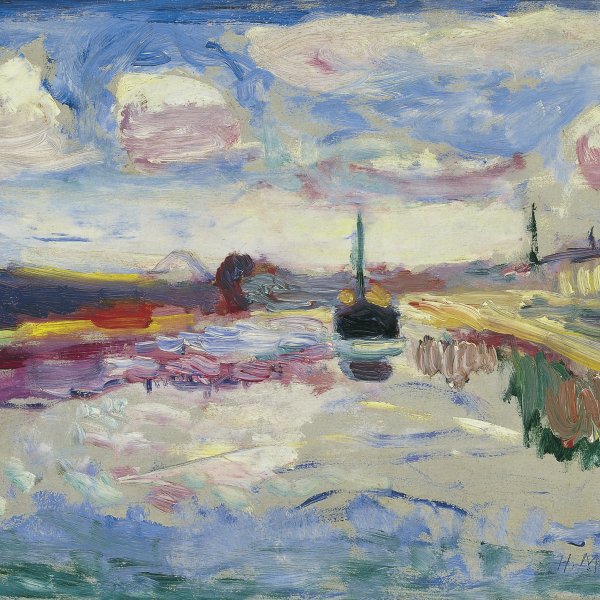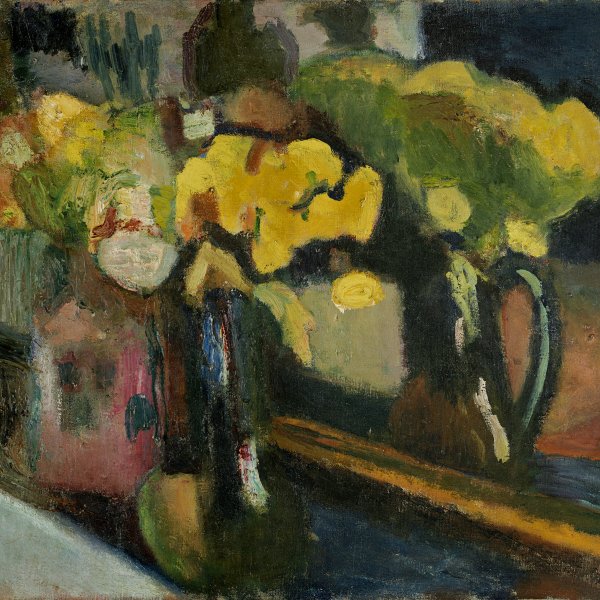Conversation under the Olive Trees
Beneath their tranquil surface, Matisse's paintings often conceal a complex discourse expressing his conflicting aspirations through the relationship between subject and style. Conversation under the Olive Trees is particularly revealing in this respect. Two elegant ladies standing on the lawn seem to be chatting. Behind them is a path; on the far side and slightly lower, we see a grove of olive-trees, while further away appears the silhouette of a hill, and beyond it another. The canvas was painted directly from nature in 1921, in the countryside around Nice. The title, which refers to olive trees, and the open sunshade of one of the young ladies speak to us of the south and sun.
The palette, however, is a restrained one: the subdued browns, blues, greens, whites and greys often make one think of Corot, admired by Matisse, who seems to have remembered his advice to put a touch of red in every picture (in his only concession to southern exuberance, Matisse has here put three). The grass seems to exude a light dew, while a morning haze hangs on the foliage. In short, in this "landscape with figures", as in all the scenes that he painted in the Midi after the war ended, Matisse is "thinking of the north" (during this period he also went to paint in Étretat). These were the years when a "call to order" was in fashion, at a time when the artist of the day was Derain.
Matisse composes in accord with the atmosphere of the time, but without betraying his convictions. It was through Impressionist landscape that he initially approached modern art. Here he is striving to return to it. It goes without saying that he never arrived: by simplifying, or rather by accentuating, the elements of the composition, a scene that seemed bound to slide softly towards the past is led imperceptibly towards the present, in other words to the pictorial plane-the categorical imperative of modernity that he himself had so much helped to impose on the age. The two young women will not get onto the mechanical pavement that descends behind them in the guise of an avenue.
As the artist noted in 1908, figures were what particularly interested. Since Le bonheur de vivre (1906), he had been dreaming of reintegrating them into a paradise of decoration which blended into the pictorial plane. But the role of that background could no longer be filled by landscape, which was too difficult to reconcile with the aesthetics of decoration that henceforth constituted his great plan, glimpsed in Morocco in 1912-1913, interrupted by the war, and temporarily suspended. It was not until a quarter of a century later that he created a painting conceived as a carpet. In the meantime, he painted rugs that hung from walls and wallpaper that simulated marble or tiles, as well as lattice windows, furniture, accessories and exotic costumes: a whole range of artificial décor in his pictures that made one forget the presence of real walls and the use of painting procedures developed in western art to make their space measurable. Confined within these interiors, in which the external world does not enter except through the window, the figures wait for Matisse to discover how to introduce them into the garden of Eden of decoration and dare to do so. Conversation under the Olive Trees, which is one of the artist's last landscapes, is the one in which the figures take their leave of nature.
Pierre Schneider














